I’ve long had an interest in WWII aviation, partly because I used to dig it up from local fields when I was a young child living in Norfolk in the 1970s. There were so many crashed aircraft close to the RAF and USAAF bases in the flatlands of Norfolk and Suffolk that it seemed to me at the time that you could kick a sod of earth and a piece of Plexiglas — from an aircraft’s canopy — would be under it. I had a collection of mangled aircraft parts, as did several of my mates.
As I mentioned the other day namechecking James Stewart, Tibenham was a United States Army Air Force Eighth Air Force (USAAF) base. There were others nearby at Thorpe Abbotts, Denham, Eye and many more, all within close cycling distance. Not just close cycling distance for me then and now but also for the period staff on the bases. I’ve got lots of research materials on the extensive use of bicycles on and around RAF and USAAF bases. The publican of one local hostelry did a roaring trade in selling bicycles back to the servicemen who had drunkenly lost their machines the night before.
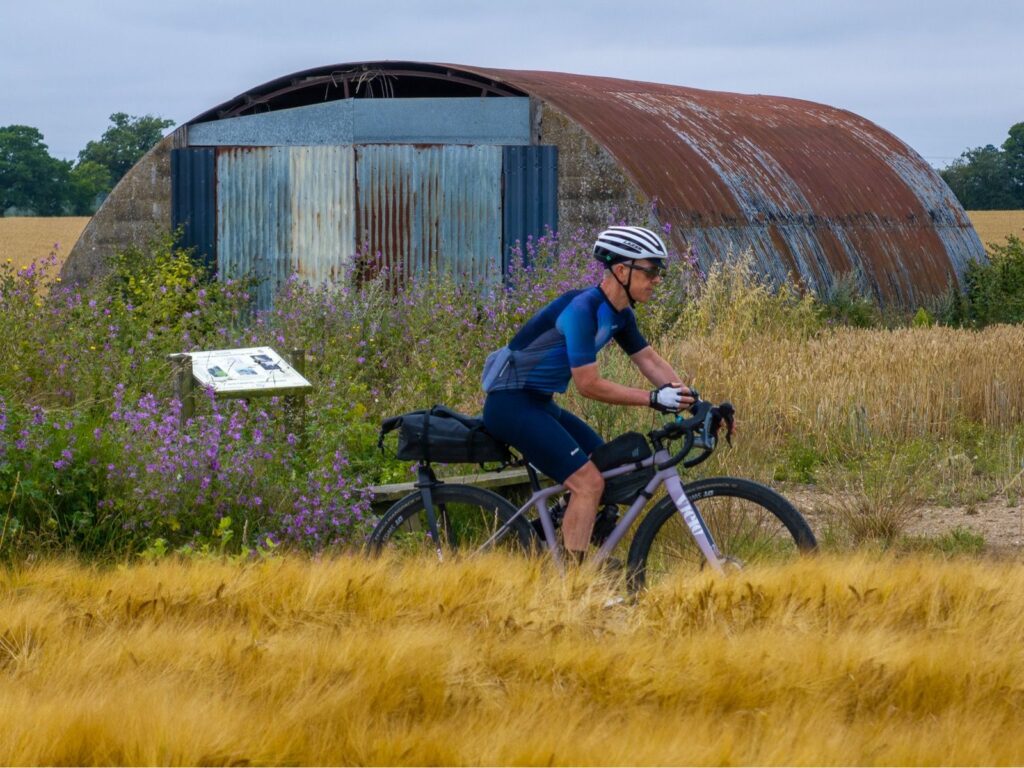
I drank in that pub yesterday — sparkling water only; I didn’t mislay my bicycle. The pub was one of those favoured by the Americans stationed at Thorpe Abbotts during the latter stages of the war. If you enjoyed Apple’s blockbuster series Masters of the Air you’ll know of Thorpe Abbotts — it’s the base featured in the factually almost spot on series. The film crew shot the outdoor scenes in Oxfordshire rather than in Norfolk. The base’s control tower was recreated by the film makers but it’s possible to visit the real thing at Thorpe Abbotts.
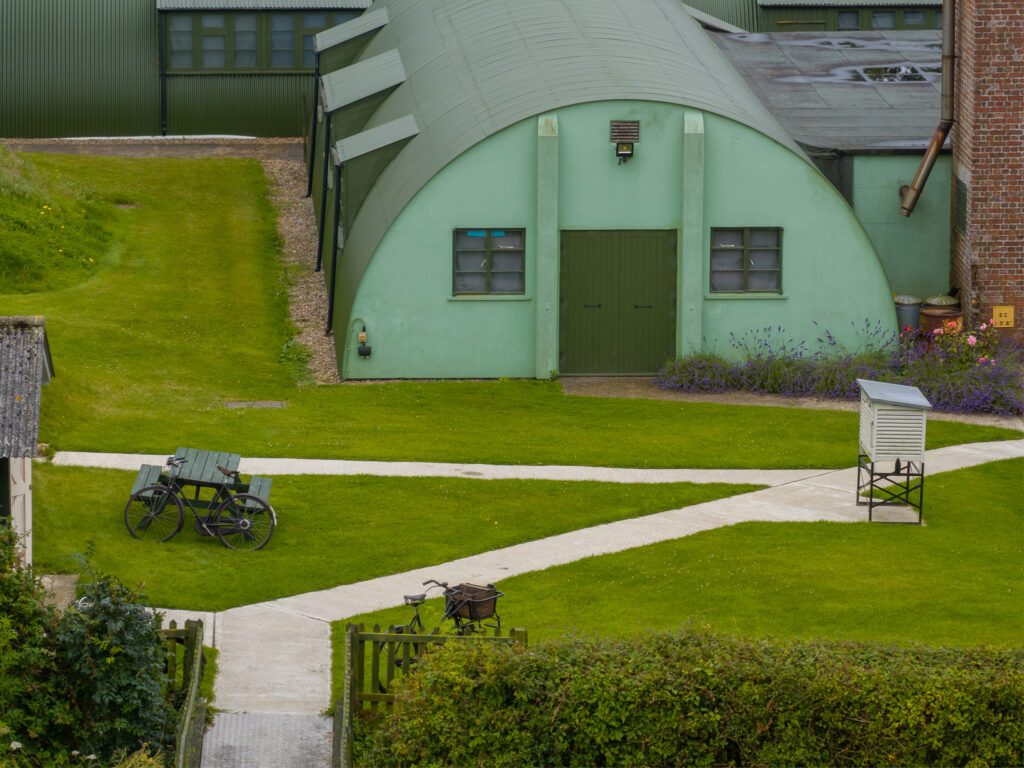
Much of the rest of the former bomber base, just three miles or so from Harleston, has reverted back to farmland. Because all that’s usually left of these bases is the odd Nissen hut it’s hard to grasp the period scale of them. But take a look at the photos I took at the former USAAF air base of Eye, close to Diss.
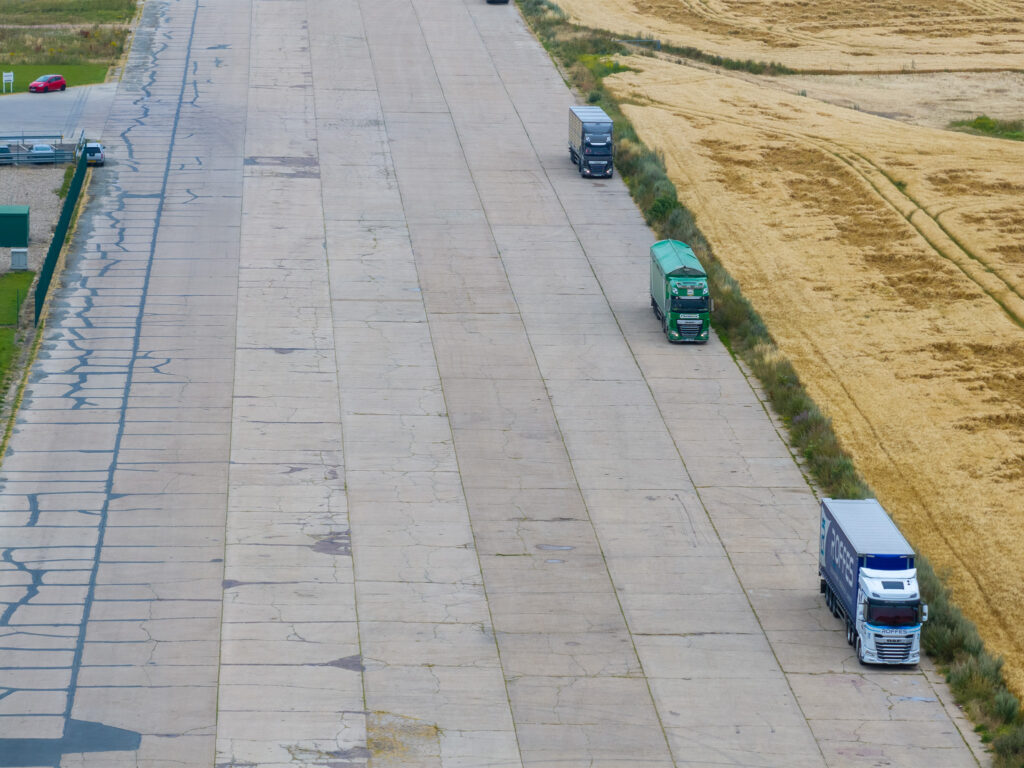
Like with other USAAF bomber bases, the Eye base’s main concrete runway was 150 feet (46 metre) wide and 6,000 feet (1,830 metre) long. In one of my drone photos three HGVs are dwarfed by the period runway.
Eye’s airfield has an original T2 hanger (now part of an industrial estate as are the runways) and, adjacent to the concrete perimeter track and close to modern housing, there’s a Nissen hut that was the base’s fuse store. The history geek in me loves these kind of in situ remnants.
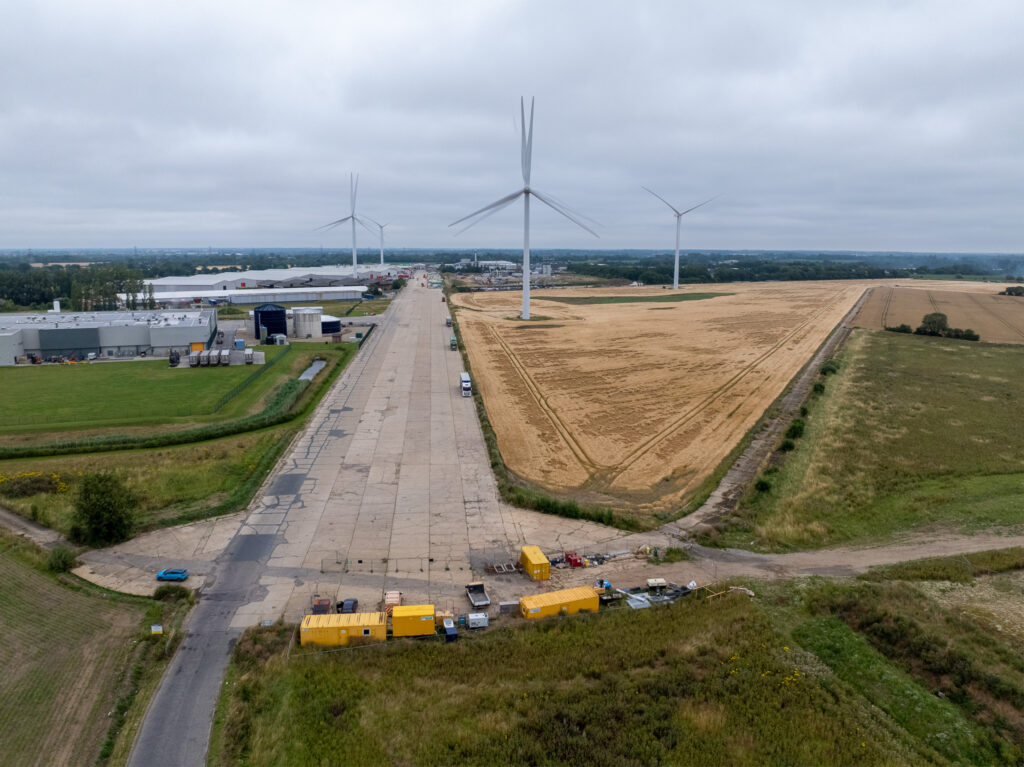
My love of history might have been spurred by East Anglia’s rich aviation past (I haven’t even mentioned Pulham Market’s WWI airship station, but I will in the book) but by meandering around Harleston I’ve had throwbacks to my pre-teen historical method. Harleston has a large boulder in one of its central side alleys and this is often associated with King Harold (“Harold’s stone,” geddit) but I recall writing a school essay on this stone at the age of about 10 or 11 and asserting that there was no proof for the association with the Saxon king.
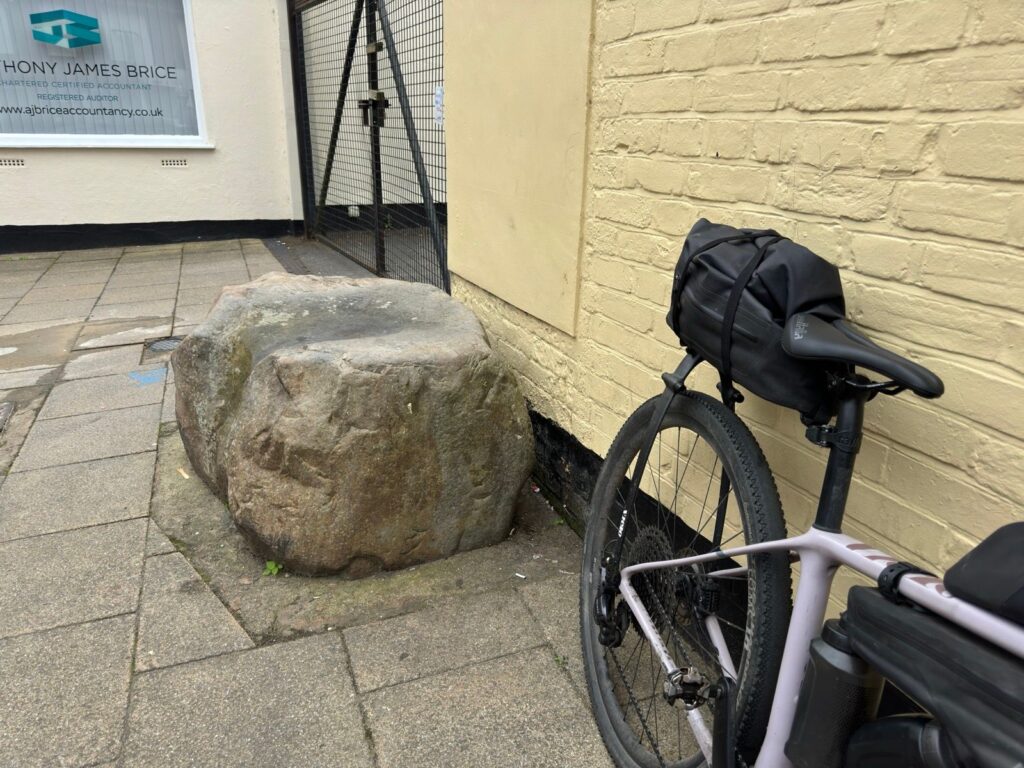
I wasn’t a cyclist when we lived in Harleston — that conversion occurred when our family moved to Norwich when I was about 13 — so my interest would not have been particululry piqued at the time by the CTC sign above a bed shop at the other end of Harleston’s high street These cast iron signs – property of the then Cyclists’ Touring Club — were erected above club-approved hotels and other such establishements in the 1880s and beyond. Many are still in place around Britain, often painted over and forgotten, others lovingly restored. This one above a Harleston bed shop denotes it was for an approved “repairer.”
The bed shop had clearly been a Victorian bicycle shop. I didn’t need to figure this out. When I lived in Harleston this was a branch of Ling’s, a moped, motorcycle and bicycle dealership. This was founded in Bungay, Suffolk, in the 1870s as a blacksmith and, like many such businesses, it also sold and repaired bicycles.
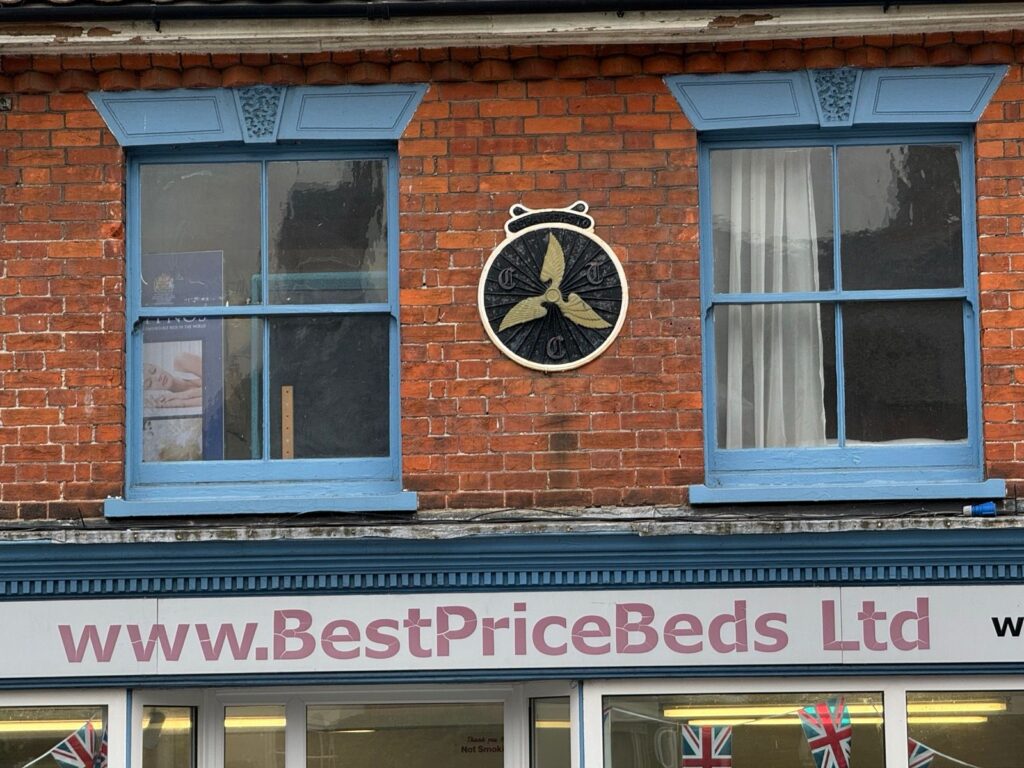
I had assumed Ling’s had been in Harleston in the Victorian period but a corporate history of the still thriving business reveals that Ling’s acquired the shop when it absorbed Mayhew’s Bicycles in 1960. I don’t have access to CTC journals of the 1880s right now so can’t research whether Mayhew’s Bicycles dates to the 1880s and was therefore the business approved by CTC back then.
Remembering how much of a history geek I was from so young tickles me. And there’s a new Apple TV+ series that features just such a pre-teen history geek. Kevin is the child character in a TV series remake of Terry Gilliam’s 1981 classic Time Bandits. One of the tics in the show is that the friendly bandits (led by Lisa Kudrow) misprononce Kevin’s name. In episode 2, one of the character’s calls him … Carlton.


